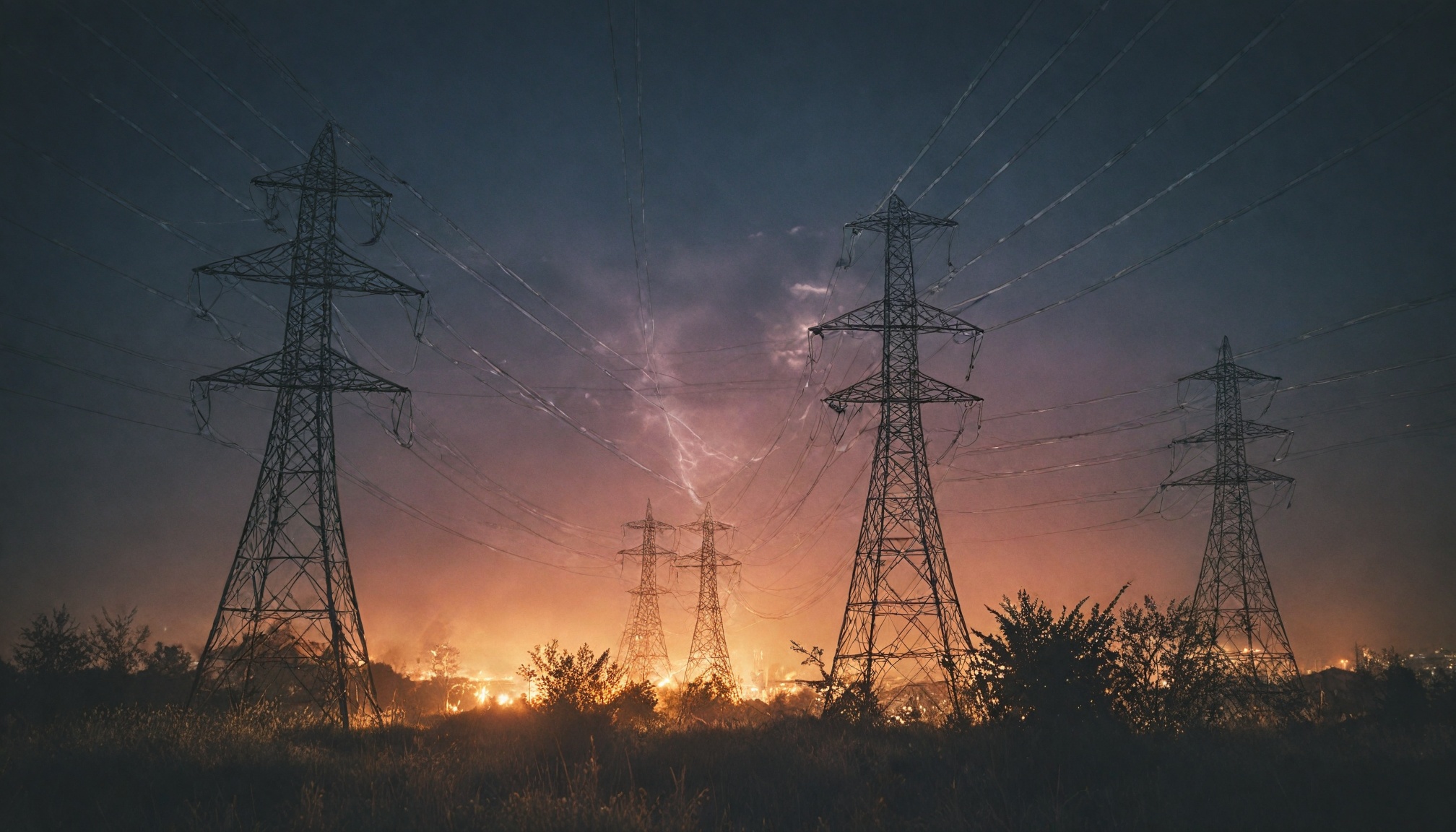
Europe's infrastructure faces coordinated threats as power grid failures across UK, Denmark and Iberia coincide with cyberattacks, revealing critical vulnerabilities in connected systems.

Drivetech Partners
The recent series of critical infrastructure failures and cyberattacks across Europe have revealed alarming vulnerabilities in interconnected network systems. In April 2025, a troubling sequence of events unfolded: highly unusual UK power frequency irregularities on the Viking Link connecting the UK and Denmark, followed closely by a widespread blackout across the Iberian Peninsula—all while major UK retailers suffered coordinated cyberattacks.
Key Takeaways
Potentially coordinated incidents affecting power grids and retailers in multiple European countries suggest sophisticated attack methods targeting vital infrastructure
Grid interconnectors, which caused the largest chunk of frequency disruptions in 2023, represent significant vulnerability points in modern power systems
The emerging vehicle-to-grid technologies create new attack vectors between automotive systems and critical power infrastructure
Implementation of zero-trust architecture and enhanced supply chain verification is essential for mobility OEMs and service providers
Cross-sector security exercises are needed to test interdependencies between power, transportation, and retail systems
Europe's Infrastructure Under Attack: A Chain of Suspicious Events
In April 2025, a series of unusual power incidents set off alarm bells across Europe's security community. Initial investigations by the National Energy System Operator (Neso) identified irregular fluctuations causing unpredictable power frequency changes hours before a massive blackout hit the Iberian Peninsula. The Keadby 2 gas-fired power facility in Lincolnshire experienced an outage around 2 a.m., followed by the unexpected frequency variations on the Viking Link – the £1.7 billion, 765 km subsea power cable connecting the UK and Denmark.
These events raise serious concerns about the security vulnerabilities in modern interconnected power systems. Interconnectors were already responsible for the largest portion of grid frequency events in 2023, with the worst incident seeing frequency plunge to 49.275Hz. The Viking Link's irregularities is particularly concerning as it can transport enough electricity to power up to 2.5 million UK homes, highlighting the dependency risks of large-scale interconnected infrastructure.
The Iberian Peninsula Blackout: Coordinated Attack or Coincidence?
The major power outage across Spain and Portugal caused widespread disruption to transportation, communications, and daily life. While officially triggered by a fault in the high-voltage transmission network operated by Red Eléctrica de España (REE), the synchronized and coordinated nature of the outage immediately raised suspicions of a cyberattack.

Spain's National Cybersecurity Institute is still investigating the cause. Their early findings indicated "no intrusion," but a cyberattack hasn't been completely ruled out. The simultaneous multi-point failures, communication disruptions, and timing amid heightened geopolitical tensions have fueled speculation about malicious activity. The World Economic Forum (WEF) has warned that the incident highlights growing vulnerabilities in energy infrastructure regardless of the ultimate cause.
A Pattern of Grid Vulnerabilities
This isn't the first time critical power infrastructure has been compromised. The 2015 Ukraine blackouts, caused by Russian hackers using sophisticated malware to infiltrate regional energy companies, set a concerning precedent. In August 2019, a Great Britain power outage affected 1 million customers, caused 60 Thameslink trains to fail, and disrupted Newcastle Airport and Ipswich Hospital – though this was attributed to technical failures rather than malicious activity.
More recently, the March 2025 Heathrow substation fire led to airport cancellations, and the FBI reported a surge in cyberattacks targeting U.S. utility infrastructure in 2024. The expansion of renewable energy initiatives has inadvertently introduced new attack vectors for cybercriminals, with energy grids consistently described as "highly attractive targets" for nation-state actors and cybercriminals alike.
UK Retail Sector: The Second Front
Concurrent with the power infrastructure issues, major UK retailers including M&S, Co-Op, and Harrods experienced coordinated cyberattacks. These incidents demonstrated sophisticated targeting of both critical infrastructure and commercial entities, leveraging IoT vulnerabilities in supply chain and payment systems.
Security analysts have noted a concerning pattern of attackers targeting multiple sectors simultaneously to maximize disruption. The economic impact of these retail sector attacks is estimated in the millions, with extensive consumer data compromised. The attacks revealed significant vulnerabilities in retail IoT implementations, including insufficient encryption and outdated firmware – issues that mirror concerns in the energy sector.
Technical Vulnerabilities in Modern Power Grids
Maintaining power frequency within designated limits is crucial for grid stability and continuous supply. The European power grid functions on a two-tier system: the 400 kV grid forms the "motorways" for transmitting large quantities of energy over long distances, while the 150 kV grid constitutes the "local roads" for collection and distribution.
The Institute of Engineering and Technology (IET) April 2025 report highlighted significant challenges in helping Britain's power grid reach net zero. Shifting transmission of large quantities of energy to lower voltage levels affects overall grid stability and requires extensive reinforcements. While interconnectors like the Viking Link are forecast to provide crucial capacity, these recent incidents raise serious questions about their security implications.
Automotive Smart Mobility: The Next Vulnerability Frontier
Original Equipment Manufacturers (OEMs) are increasingly concerned about IoT security vulnerabilities in connected vehicle systems. Vehicle-to-grid (V2G) technology creates new attack vectors between automotive systems and critical infrastructure, while automotive industry security standards lag behind the implementation speed of new connected features.
Over-the-air (OTA) update capabilities create both security solutions and potential attack vectors. Communication Service Providers (CSPs) report increasing attack attempts targeting vehicle communication networks. Smart mobility implementations in cities create complex attack surfaces involving multiple stakeholders, and recent power grid incidents raise valid questions about cascading failures affecting electric vehicle charging infrastructure.
Security Strategy Options for Key Stakeholders
Mobility OEMs are advised to implement zero-trust architecture and enhanced supply chain security verification. CSPs need to develop advanced threat detection systems specifically for automotive communication protocols, while government regulatory frameworks must evolve to address cross-sector vulnerabilities.
The following security strategies are essential for protecting critical infrastructure:
Public-private partnerships for sharing threat intelligence across sectors
Enhanced digital forensics capabilities to reduce diagnostic lag
Implementation of redundant systems and security-by-design principles
Regular security audits of interconnected systems
Rapid response protocols for cross-border incidents
Future-Proofing Critical Infrastructure
The integration of AI-based anomaly detection across critical infrastructure monitoring systems represents an important defensive measure. The establishment of international standards for IoT security in critical infrastructure and smart mobility applications will help create a more secure ecosystem.
Regular cross-sector security exercises are needed to test interdependencies between power, transportation, and retail systems. The development of resilient microgrids can reduce cascade failure risks, while smart cities must implement segmented network architectures to prevent widespread system compromise.
Consumer education on securing connected devices that interface with critical services is also essential. The expected £500 million in UK consumer savings from the Viking Link over the next decade must be balanced against the necessary security investment needs to protect this vital infrastructure from emerging threats.
Sources
Telegraph - Grid operator investigates unusual activity before Spain blackouts
Watt Logic - Interconnector imports exports
Energinet - Technical issues related to new transmission lines in Denmark
IET - Rewiring Britain's future report
National Grid - Commercial operations Viking Link announcement
Industrial Cyber - WEF warns of growing cyber threats to energy infrastructure
SpecOpsSoft - Spain Portugal blackout cyber attack analysis
World Economic Forum - Spain blackout and electric grid vulnerabilities






